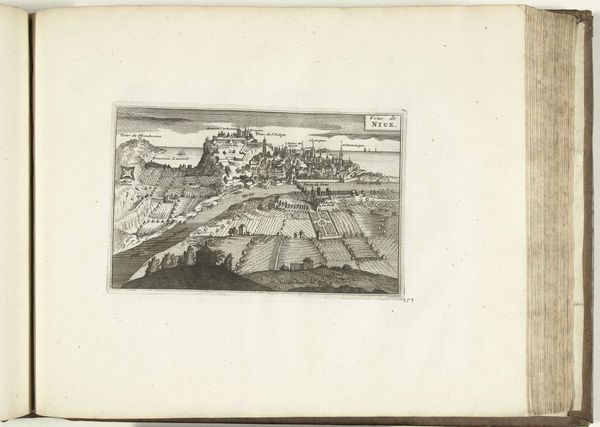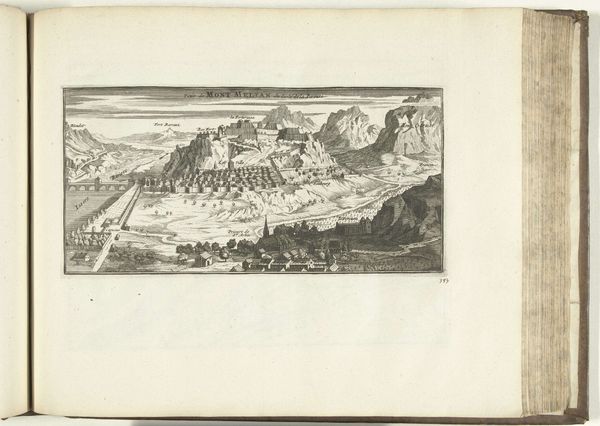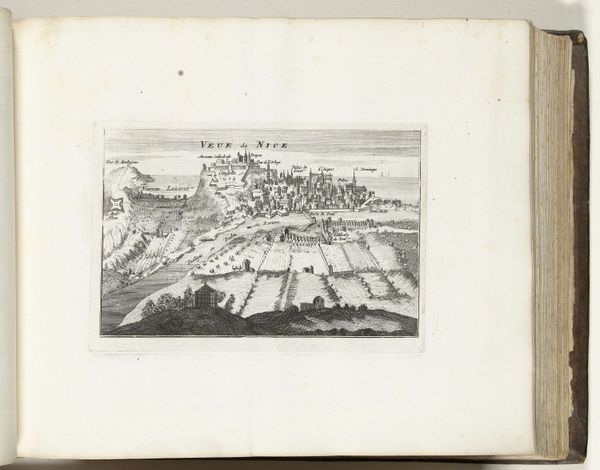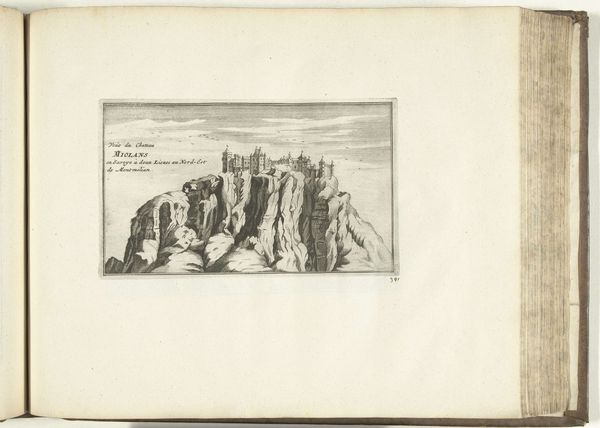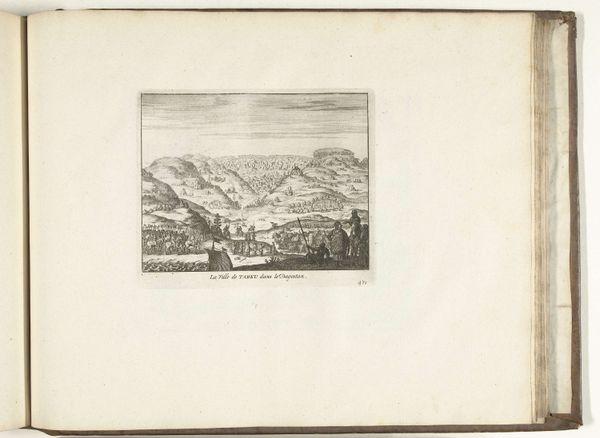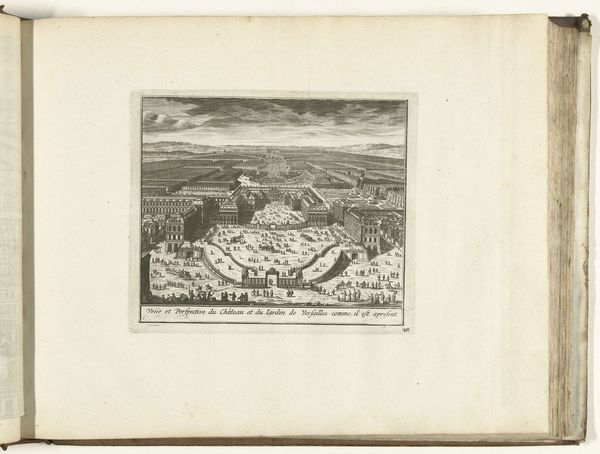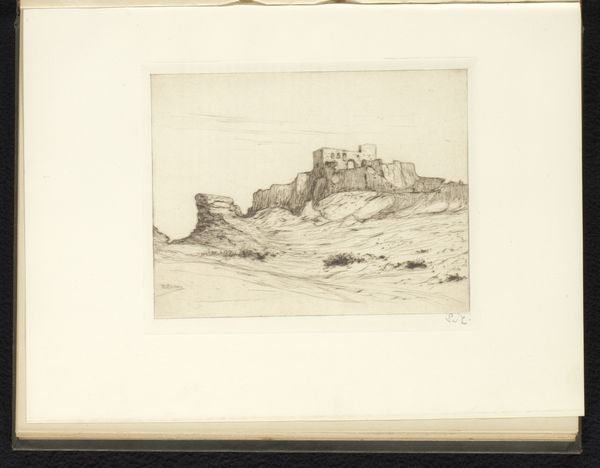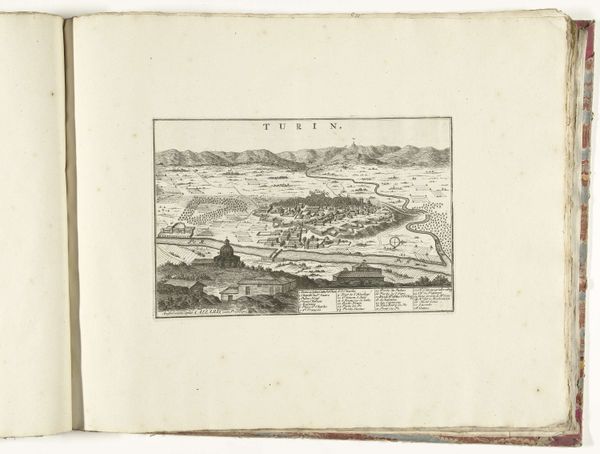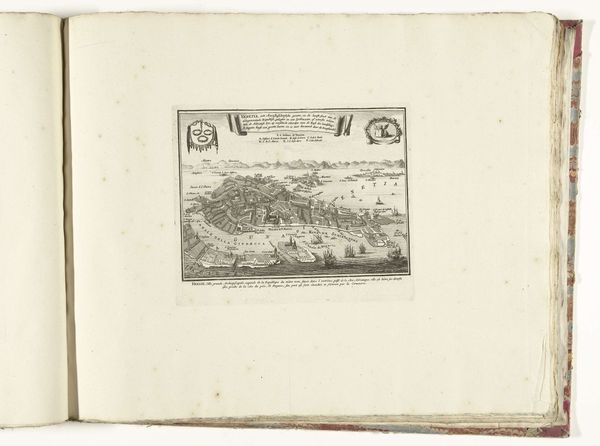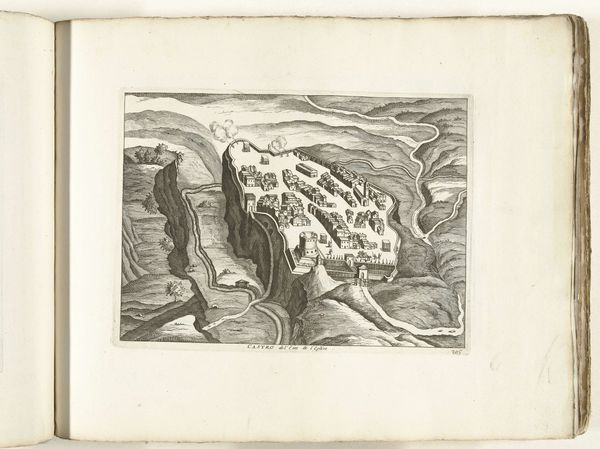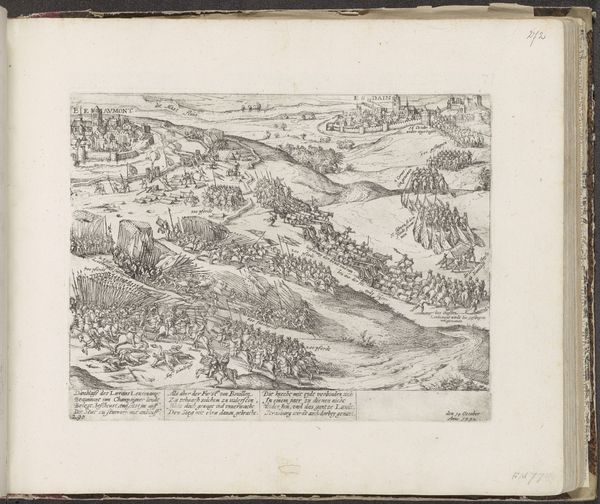
print, etching
#
baroque
# print
#
etching
#
landscape
#
cityscape
Dimensions: height 139 mm, width 215 mm
Copyright: Rijks Museum: Open Domain
Editor: Here we have "Gezicht op Nice," a cityscape etching from around 1702. It depicts Nice from a distant vantage point, the city nestled between the mountains and the sea. It feels very...ordered, like a carefully planned display. What historical forces might have been at play during the creation of this piece? Curator: Good observation! The “order” you perceive speaks to a particular era of city planning and visual representation. Seventeenth and eighteenth-century cityscapes, like this one, often served more than aesthetic purposes. Consider who commissioned this work and its intended audience. Was it for strategic military intelligence, to impress potential investors, or to simply glorify the urban development? Editor: That makes sense. I hadn’t thought of it as possibly having strategic purposes. How would this image function differently in the context of say, a military campaign versus promoting urban development? Curator: In a military context, the print’s precision in depicting fortifications, harbor depths, and topographical features would be paramount. Elements like the walled city and any defensive outposts would be emphasized. If the purpose was promotion, the emphasis would shift to the grandeur of the architecture, the flourishing trade represented by the ships, and the organized layout symbolizing prosperity and civic control. What details stand out to you that might suggest one function over the other? Editor: Well, the title is rather straightforward, simply ‘View of Nice’, and it doesn't highlight military defenses specifically. There is an abundance of very orderly agriculture in the foreground though. Would that promote an idea of fruitful governance and abundance to potential investors? Curator: Precisely. Think of these prints as visual marketing, designed to shape perceptions of a city. The highly regulated landscape signifies control and prosperity, making Nice appear attractive for investment or settlement. So the political power that organizes the city's layout is further echoed through this image. Ultimately the imagery is meant to promote Nice to wider audiences. Editor: So it's about conveying an image of power and control? I see how the "order" of the scene then plays into a broader political narrative. Thanks, I learned a lot! Curator: My pleasure! This helps us remember to always consider not only what's depicted but also *why* and *for whom* when interpreting art.
Comments
No comments
Be the first to comment and join the conversation on the ultimate creative platform.
